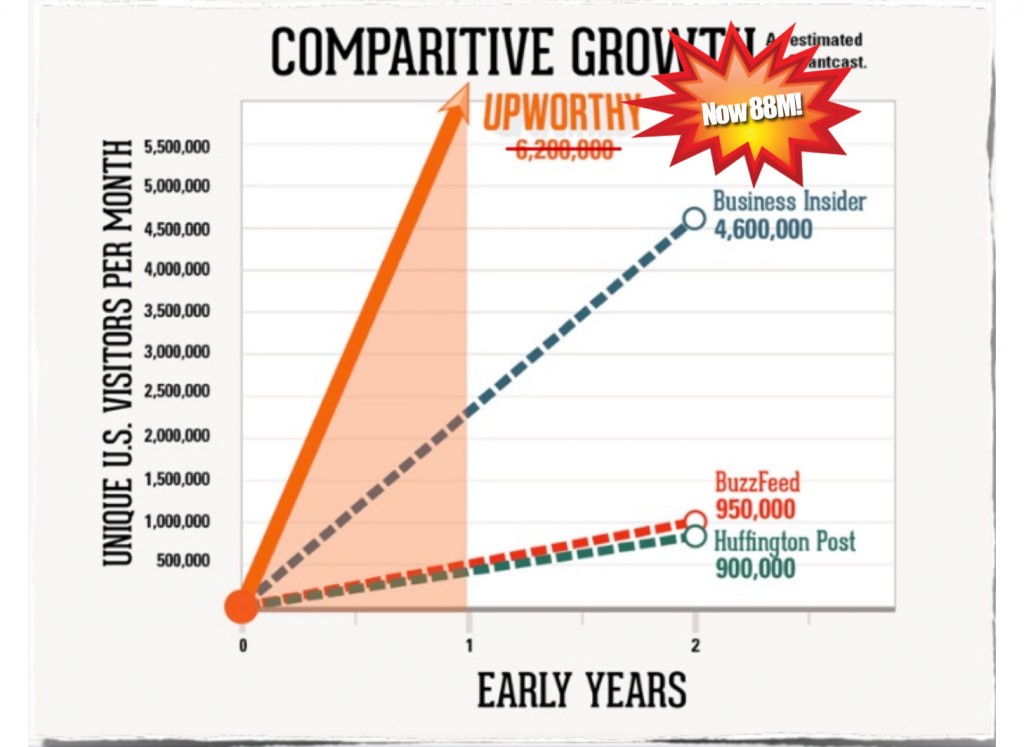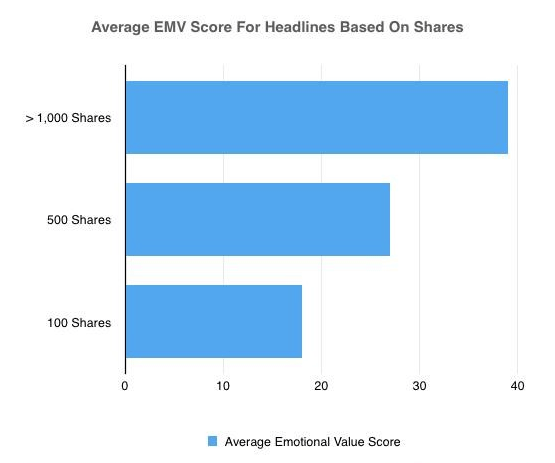When I say emotional headlines you say… bleh.
But, maybe you shouldn’t write them off so quickly.
One look at your Facebook news feed reveals that emotional headlines influence what visitors are seeing online.
Sites such as Buzzfeed and Upworthy are filling our news feed with emotional headlines, and we’re clicking on them–a lot.
OK, maybe not you (yeah, right), but someone is clicking on them and that matters.
Whether you love them or hate them, you should be talking notice and learning what you can from their success. And, you CAN learn something.
Not long ago at CoSchedule (a social editorial calendar for WordPress) we reached a milestone of one million headlines in our database.
We decided to take the opportunity to learn what exactly made one headline better than the other. The data was interesting, but you’ll never guess what stood out.
Yes, emotional headlines.
Emotional Headlines Work
We compiled a list of headlines in our system and the total number of shares that each post received online.
Assuming that posts with more shares were more popular, we then took a subset of those headlines and tried to figure out what made them so good.
Common words in highly shared headlines included things such as you/your, free/giveaway, how to, and many of the typical phrases that we’ve seen before.
It wasn’t until we starting looking at the emotional side of words that things really got interesting.
We started testing the most (and least) shared headlines using the Emotional Marketing Value (EMV) Headline Analyzer as made available by the Advanced Marketing Institute.
This handy little tool uses its custom algorithm to rank the emotional value of a headline.
According to the Advanced Marketing Institute:
Most professional copywriters’ headlines will have 30-40 percent EMV Words in their headlines, while the most gifted copywriters will have 50-75 percent EMV words in headlines.
The interesting thing is that we were able to verify that there was a direct correlation to the number of shares and the emotional value of a headline.
The Data to Prove it
To test, we took an average sampling of headlines in three different sharing groups.
- Posts with greater than 1,000 shares.
- Posts with 500 shares.
- Posts with 100 shares.
Here are the results:
The results showed there was a direct (and significant) correlation between “viral” content and the overall emotional value of the headline.
We compared the data to a few popular blogs that are already using this tactic to their advantage and found similar results.
Here’s the deal: Emotional words make for emotional headlines and those kind of headlines get shared. They always have.
We’ve all read The National Enquirer while waiting in line at the grocery store, even if we’re pretending not to.
Emotions work, but that doesn’t make them bad. You should think twice if you tend to shrug them off.
Will emotional headlines get you more shares and more traffic?
Probably.
Does it mean that you are the next Buzzfeed?
Probably not.
Incorporating Emotion into Your Content
Too much of a good thing can be wrong (ahem… Buzzfeed), but my point is we need to stop being mad at the method, and start embracing the reality of our audience.
We need to better understand why people actually share content in the first place.
According to a study conducted by The New York Times Customer Insight Group, there are six reasons that people share things online.
- To bring valuable and entertaining content to others. Nearly half (49%) say sharing allows them to inform others of products they care about and potentially change opinions or encourage action.
- To define ourselves to others. Almost three-quarters (68%) share to give people a better sense of who they are and what they care about.
- To grow and nourish our relationships. More than three-quarters (78%) share information online because it lets them stay connected to people they may not otherwise stay in touch with.
- Self-fulfillment. Nearly three-quarters (69%) share information because it allows them to feel more involved in the world.
- To get the word out about causes or brands. Close to all (84%) share because it is a way to support causes or issues they care about.
All-in-all, these are highly emotional reasons that go deep into our own personal fulfillment and value.
This means sharing the content you create is not a mechanical process carefully weighed by the over quality of your post. Rather, it is an emotional response to a rather emotional process.
Perhaps these emotional headlines aren’t so bad, after all. Perhaps they could be an asset to your content marketing after-all.
What do you think? Can headlines be emotional without being Buzzfeed?
Note from Gini: If you want to try this on some of your own headlines, Garrett and his team just launched a headline analyzer. Check it out!


